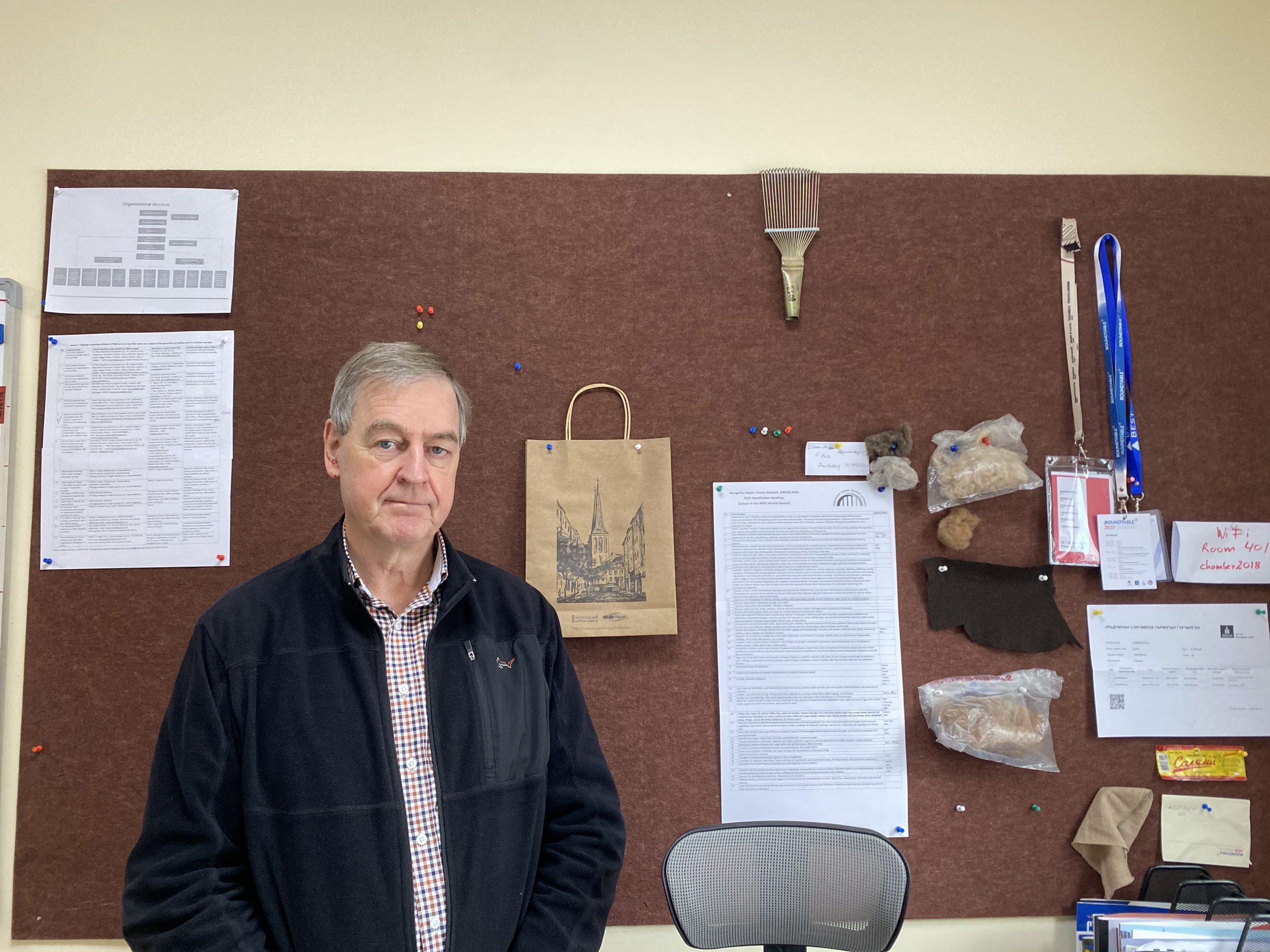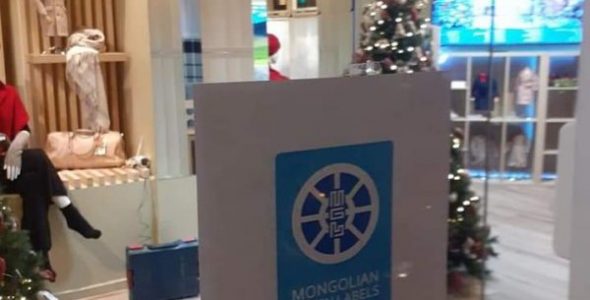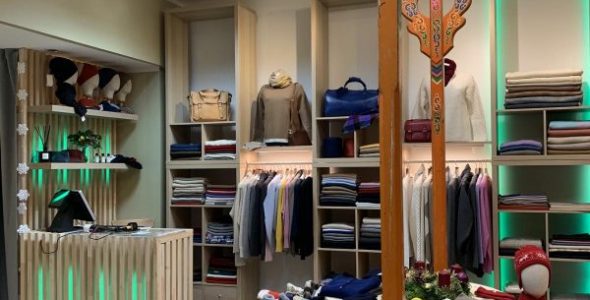Carl Krug: Mongolia has enough resources to occupy niche markets

We interviewed Mr. Carl Krug, Senior private sector development expert to the EU-Trade Related Assistance to Mongolia (TRAM) Project, on the outcomes of the project and opportunities in the development of non-mining export.
-Can you give us a brief information on the initial objectives of the EU-TRAM project and its scale of operation?
-The TRAM project funded by the European Union was implemented from March 2017 to July 2021 as a part of the Partnership and Cooperation Agreement (PCA) between the European Union and Mongolia. About three years ago, the project together with the partners identified four sectors that had the greatest potential on the EU market, which were textile, leather, cosmetics and seabuckthorn. Within the three main components of the project including trade policy, trade facilitation and export development, we partnered with the Ministry of Foreign Affairs, the Customs General Administration and Mongolian National Chamber of Commerce respectively. The project has worked on all levels from the policy framework up to the development of products.
-What were the biggest challenges Mongolia faced in export development, and how did the project help to overcome these challenges?
-First, I would like to highlight the positive sides. Mongolia has fantastic natural resources, which are unique or nearly unique in the whole world. In many products, Mongolia practically has no competitors in the world. For instance, skin and hair care products made of plants and animal ingredients such as body lotions made from horse oil, sheep tail fat or camel milk. No other country has such products. Of course, it is a niche market and not everybody wants these products. But those who want it will have to buy it from Mongolia. Thus, it is much better to occupy the niche market totally instead of competing with many other countries in the mass market.
Another example is textile products. With no doubt, Mongolia is one of the main exporters of raw cashmere and cashmere products, but here it has to compete with China, Italy and the UK. However, Mongolia has a unique selling position in the fiber market with its yak hair and baby camel hair.
Baby camel hair, for example, is the rarest product in the world and has the same quality as cashmere. Only China has such resources, but the country hasn’t developed these resources well yet. We can make fantastic products from baby camel hair, which is as soft as, as fashionable and as nice as cashmere products. The cost of the raw material is much lower and therefore the price of the product is also lower. If the producers raise the price a bit, Mongolian companies can make much more profit with this kind of product, compared to cashmere products. Also, considering the unpredictable fluctuation of raw material price and the fact that cashmere production contributes to land degradation and desertification, the baby camel hair is an excellent alternative to cashmere. It is even possible to reduce the number of goats and get the compensating income from products made of baby camel hair.
Yet, most of Mongolian manufacturers in the textile sector are not utilizing this nearly perfect resource. More and more people are turning away from cashmere, and they want an alternative.The challenge you asked of is not in entering the world market. As a rule, people say that it’s difficult to market the product, but the market is there. Thus, the challenge is more internal than external. It is a lack of willingness and knowledge.
The steppes and the mountains of Mongolia are rich in rare plants, which can be used in pharmaceutical and cosmetic products. Another example is leather. It is hard to compete with major suppliers like China and Spain with sheepskin. However, Mongolia has a nearly unique resource, such as yak leather. With vegetable tanning, it could become a very unique product. Of course, not everyone would want such a product, but there is a niche market.
All above-mentioned examples are not just a theory. Within the framework of the TRAM project, we have supported the development of these unique and innovative products.
-Can you tell us more about the product development and the possibilities that we should seek?
-As I mentioned before, the project has supported the development of products made of baby camel hair, vegetable tanned yak leather and natural cosmetic products. For instance, felt covered soap made from sheep tail fat and marrow by Helen Made. We have helped the company register this very innovative and unique product in the European market. Not only is it the first Mongolian cosmetic product registered in the EU, but also it has no competitors in the market due to its uniqueness.
I haven’t mentioned the potential of sea buckthorn products yet. Currently, we only use the fruit to produce juice, oil and so on. However, we leave the leaves behind. The research has shown that the leaves are as rich in nutrients as the fruit itself. Thus, one can make tea from the leaves. It has a similar taste to green tea, but more fruity and doesn’t contain caffeine, which is preferable for some people. It is another potential resource that is lying on the table. Companies should make use of them.
Another example of a product that will have great potential in Europe is camel milk. It is a perfect choice for people with lactose intolerance. Also, cosmetic products made of camel milk have a number of benefits for skin. So I want to encourage the businesses to look into these possibilities and make use of these wonderful resources.
-All the mentioned products target a niche market. What kind of promotion strategies should be used for this kind of market and especially for European countries?
-The niche market has its advantages and disadvantages. The disadvantage is the size. It is a very small market. However, the production capacity of Mongolian companies is very limited compared to other countries. Thus, the niche market perfectly matches the production capacity and the raw material that Mongolia has. For instance, the country has a capacity to produce 100 tons of baby camel hair a year, which will perfectly meet demand of the niche market.
One of the advantages is that you can make much more profit from this kind of market, because you have very little or no competition. Thus, you can set the price and don’t have to follow other countries. Due to this fact, you can make much more profits from products made of baby camel hair and yak leather on the niche market, than from cashmere products on the mass market.

The Mongolian Green Labels store in downtown Berlin.
Another advantage is that people interested in baby camel hair products will immediately find products from Mongolia, because there are almost no other countries that offer such products. If you google “cashmere”, you’ll find millions of hits. Whereas when you google “baby camel hair”, there will be very few results and all of them will be from Mongolia. It also makes it easier to do marketing campaigns for niche markets. Also, all these organic products follow certain trends.
The project has done two important things for marketing. One of which is the development of Mongolian national brand “Mongolian Green Labels”. It offers green products from many companies and sectors including textile and cosmetic products. With the brand it is now easier to do the marketing and there is no need for running separate marketing campaigns for each brand, unknown to the European market and some of which are very hard to pronounce.

The Mongolian Green Labels store in downtown Berlin.
Along with the brand, we have created a marketing channel, one of the biggest results of the TRAM project. The Government’s Mongolian Export Program was planning to establish the Information and Trade Promotion Center in Berlin. The project consulted the Government to extend this idea to a store of Mongolian products. The store opened in 2019 under the brand name Mongolian Green Labels in downtown Berlin. It will be a perfect location later, when the tourists return. The store is owned by the company established by a group of Mongolians living in Berlin.
In this way the TRAM project has created a marketing channel and a supply chain from herders in aimags through the manufacturers in Ulaanbaatar to the store in Berlin. It is completely managed by Mongolian nationals, and only they benefit from this chain. It is very unique, because no other project in Mongolia has ever made such achievements. The store is complemented by an online shop mongolian-green-labels.eu, which sells the products to all countries of the European Union, a market of 400 million people. The store in Berlin is an excellent example of what can be done in other countries. We can open similar stores in Russia, China, Japan, and the US. As there are many Mongolians living in these countries and some of them are able to invest in the establishment of such stores. Also, it would be ideal to run the stores under the same brand name, so that we have a worldwide network of Mongolian Green Labels stores. In this way, the SMEs will be able to benefit from international markets, without the burden of finding a market and starting its own marketing campaign. As you can see there are much more opportunities than challenges and as business people we should always seek for an opportunity.
-One of the biggest achievements of the project is the development of clusters. Can you give brief information about the clusters and its operations?
-I have described all the opportunities that you have. Now the question is, how can we exploit them? It is very clear that a company alone cannot make use of these opportunities in the world market. There is simply not enough production capacity and investment portfolio for that. Thus, the companies, especially the SMEs should work together. The project has created the following approach for the export cluster.
First, it includes all the companies along the supply chain such as herders’ cooperatives, manufacturers, exporters, and distributors. However, they alone are not enough. We need government representatives such as the Customs Authority, the Ministry of Agriculture or Foreign Affairs. It changes the old approach of associations that used to unite only companies. But it is still not enough, because the development of new products requires research institutions. Thus, the relevant universities and laboratories are also members of the cluster. The export cluster model developed by the TRAM projects include the representatives of the companies, the government, and the science sector. It goes beyond the association approach, because all the stakeholders are sitting at the same table. We no longer send letters to each other and wait for the response. The association model works fine for domestic trade, but to enter the world market we need the triple helix model.
This model has already been very successful for the cosmetic cluster. Now they have a very good relationship with the public bodies and the research institutions as they all are the members of the cluster.
Further, the project aided the establishment of the Mongolian Export Cluster Network NGO, an association of export clusters. It was established by the four clusters of the TRAM project and the Pine Nut Cluster, established by the Mongolian National Chamber of Commerce and Industry.
The objective of this network is to disseminate the idea of the triple helix model and to help establish new clusters in the sectors that have export potential such as honey, casing and so on.
I am also happy to mention that the board appointed me as an advisor to the network and together with the colleagues we are ready to help the SMEs. So, the SMEs interested in the development of an export cluster can contact us and get the necessary advice and support. It should be noted that since the TRAM project is completed, the network is financing itself, so we need certain contributions from the companies.
-The project broke the ice for many SMEs by developing the national brand, export clusters and the store in Berlin. Is it right to assume that the SMEs should just use and improve these models and channels the project has developed?
-Every project is limited, especially in time and budget. Also, it should be noted that like any other project, the TRAM project was impacted by the COVID-19. Therefore, we could not organize as many trainings, meetings, and conferences as we wanted, which resulted in delays in achieving our goals. However, despite the restrictions and lockdowns all over the world, we were able to achieve them and open the store in Berlin amidst the pandemic. Therefore, I would like to encourage the SMEs to work hard and overcome the challenges. There is always a way to overcome hardships.
As I mentioned before, we have already successfully registered one cosmetic product in the European Union and there are 20 more products to go. We still have a lot of work to be done.
It costs EUR 1500 to register a cosmetic product, which is about 5 million MNT, and not many SMEs are able to cover such costs. You are right, we have started these things, but we’re still far from completely succeeding at it. All this work demands a huge investment, especially from the EU, as the project was aimed at expanding the trade between Mongolia and the EU. The SMEs still need support and that is why we hope there will be the TRAM 2 project.
-Are there any other options to attract investment from other donors or private investors?
-Of course, we need to look beyond the EU. There are other organizations and donors such as JICA that are working in the field of cluster and supply chain development. Also, we can find local companies in Europe, Japan, the US and so on, interested in the development of Mongolian natural products. These companies know their markets and the demand for green products. All we have to do is to explain that Mongolia has these green products. It could be a win-win situation for both sides as they will be able to profit later from the distribution. Actually, the purpose of the trade promotion center is not only operating the store, but also finding investors. With the store, the investors will be able to see the quality of the products and immediately recognize what Mongolia has to offer.